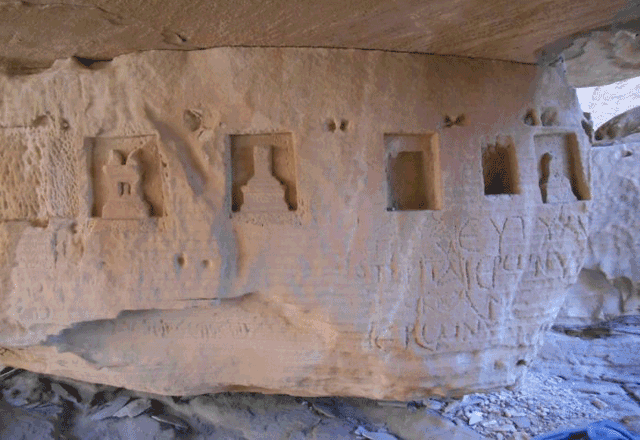An ostracon — a piece of pottery broken from a vase — found in 1966 by British archaeologist Crystal Bennett (1918-1987) at Umm Al Biyara in Petra, offered a textual, linguistic and palaeographic perspective on ancient life in the area, noted a Jordanian epigrapher.
“Despite the brevity of the inscription and the poor state of preservation, the Umm Al Biyara ostracon remains one of the very few representatives of the ‘Edomite corpus’ [Edom in the biblical prophetic corpus]. For this reason alone, the effort exerted to shed more light on it is justified. It should be noted that this study has been carried out on the basis of examination of a photograph and drawing of the ostracon: The original ostracon can no longer be located,” said Professor Omar Ghul.

According to Bennett, the ostracon was dated to the mid-7th century BC, containing an inscription of an economic-administrative nature.
“It probably falls within the category of ‘delivery notes’. In this genre the inscriptions usually include several of the following elements: The date of the document; the designation of the commodity; the name of the sender or recipient; the place of origin; and quality and quantity designations of the commodity,” Ghul explained.
Another ostracon from that period was found in Hisban in the late 7th-early 6th century BC, and it describes various commodities like grain, sheep, goats, cows, precious metals and wine.
“The identity of the text as a ‘delivery note’ remains unaffected by whether the text was an ostracon notifying the delivery of oil or a text written on the jar that contained the oil, referring to its contents and the place of origin before being sent to Umm Al Biyara,” Ghul said.
He noted that the latter suggestion seems more probable, taking into account the wide margin at the left side of the text.
The limited knowledge of the Edomite language makes things more complicated: “The small corpus of Edomite texts does not sufficiently provide an indication of its main characteristics,” the epigrapher said.
Taking an overall view of the linguistic evidence from the Umm Al Biyara ostracon, it seems safe to describe its language in general terms as north-west Semitic, Ghul said.
“The Umm Al Biyara ostracon was probably a delivery note written on a jar. It reports the delivery of oil from a certain place. This situation fits well with the natural and archaeological settings of Umm Al Biyara, as it seems sound to assume that the mountainous settlement maintained itself through supplies brought from elsewhere, where natural conditions were more favourable for agricultural and pastoral production,” Ghul noted.
The script confirms the archaeological dating of the shred to the 7th century BC, he said, while, on the other hand, neither the script nor the language is decisive in answering the question about the identity of the ostracon.
“The main criterion for classifying it as Edomite remains, as before, its provincial affiliation,” Ghul outlined.
--
Source: the Jordan Times.
